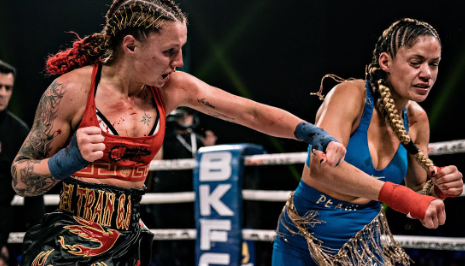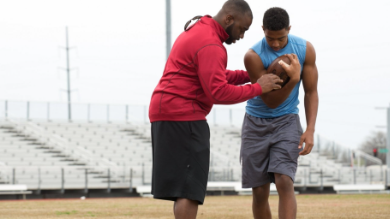
The Resurgence and Evolution of Women’s Boxing: From Bare Knuckle to Modern Glory
Women’s boxing has a rich and storied history, characterized by periods of intense struggle and remarkable triumphs. Despite facing significant societal and institutional barriers, women in boxing have persevered, carving out a space in a sport traditionally dominated by men. Today, women’s boxing is celebrated for its skill, athleticism, and the powerful stories of its fighters. One fascinating chapter in this ongoing saga is the resurgence of bare-knuckle boxing, which has brought renewed attention to the roots of the sport and the fierce determination of female fighters.
Bare-knuckle boxing, the earliest form of the sport, traces its origins back to the 18th and 19th centuries. During this period, boxing was a brutal, unregulated affair, with fighters competing without gloves and often engaging in marathon bouts that lasted until one opponent could no longer continue. While men’s bare-knuckle boxing was relatively well-documented, women’s participation was often overlooked or dismissed. However, historical accounts reveal that women did participate, demonstrating remarkable resilience and skill despite societal prejudices.
The resurgence of bare-knuckle boxing in recent years has reignited interest in this primal form of combat, and women have been at the forefront of this revival. The re-emergence of organizations like Bare Knuckle Fighting Championship (BKFC) has provided a platform for female fighters to showcase their talents in this raw and unadulterated format. This resurgence has not only revived a historical aspect of the sport but also highlighted the evolution and progress of women’s boxing as a whole.
Modern female bare-knuckle boxers embody the same grit and determination as their historical predecessors, but they also benefit from advancements in training, safety, and promotion. Unlike the unregulated brawls of the past, today’s bare-knuckle bouts are governed by strict rules and safety protocols designed to protect the fighters. These regulations, combined with the fighters’ professionalism and athleticism, have elevated bare-knuckle boxing to a respected and thrilling sport.
One of the most significant impacts of bare-knuckle boxing on women’s boxing is the increased visibility and recognition it brings to female fighters. High-profile bouts and media coverage have introduced a new audience to the skill and bravery of women in combat sports. Fighters like Bec Rawlings and Paige VanZant have transitioned from traditional boxing and mixed martial arts to bare-knuckle boxing, bringing their fan bases with them and attracting new followers to the sport. Their participation has demonstrated that women can excel in the most intense and demanding arenas, earning respect and admiration from fans and peers alike.
This resurgence of bare-knuckle boxing has also prompted a broader conversation about the representation of women in combat sports. Historically, female athletes have struggled for equal opportunities, funding, and media coverage. The success and popularity of female bare-knuckle boxers challenge these disparities, showcasing women’s capabilities and drawing attention to the need for greater support and investment in women’s sports. This visibility is crucial for inspiring the next generation of female fighters and ensuring that they have the resources and opportunities to pursue their dreams.
Furthermore, the physical and mental toughness required for bare-knuckle boxing has helped dispel stereotypes about women in sports. These fighters undergo rigorous training regimens, honing their skills and conditioning their bodies to withstand the rigors of the ring. Their dedication and resilience serve as powerful examples of what women can achieve when given the chance to compete on equal footing. By excelling in a sport known for its brutality and intensity, female bare-knuckle boxers challenge preconceived notions about gender and athleticism, paving the way for broader acceptance and recognition of women in all areas of sports.
The resurgence of bare-knuckle boxing has also highlighted the rich diversity within women’s boxing. Fighters come from various backgrounds and disciplines, bringing unique styles and strategies to the ring. This diversity enhances the sport, offering fans a wide array of exciting matchups and showcasing the depth of talent in women’s boxing. Whether transitioning from traditional boxing, mixed martial arts, or other combat sports, female fighters bring a wealth of experience and skill to bare-knuckle boxing, enriching the sport and broadening its appeal.
As women’s bare-knuckle boxing continues to grow in popularity, it serves as a testament to the enduring spirit and determination of female fighters. Their journey from the fringes of the sport to its forefront reflects broader societal changes and the ongoing fight for gender equality. By embracing the roots of boxing and pushing the boundaries of what is possible, these women are not only reviving a historical tradition but also forging a path for future generations.
In conclusion, the resurgence of bare-knuckle boxing has had a profound impact on women’s boxing, bringing greater visibility, recognition, and respect to female fighters. By excelling in this demanding and intense format, women have challenged stereotypes, inspired new fans, and highlighted the need for greater support and investment in women’s sports. As the sport continues to evolve, the contributions of these trailblazing women will remain a vital part of its legacy, ensuring that their stories of courage, resilience, and triumph continue to inspire for years to come.



